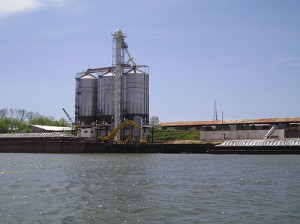
By Taylor Schaefer, Publishing Project Leader for Save The Water™ | June 29, 2016
News of water contamination in New York, West Virginia, and Michigan have received a significant amount of national attention this year; however, these are not the only places in the country suffering from dangerous levels of pollution. The West Morgan-East Lawrence Water Authority, along with the residents in Decatur, Alabama, have had enough and joined the fight in pursuing legal action against manufacturing companies for the high levels of toxicity they have been experiencing in their water supply.
The EPA has recognized water contamination issues in Alabama on more than one occasion, and statistics from a 2014 report from the Environment America Research and Policy indicate that Alabama has ranked fourth in the country for states with the highest toxic discharges. Furthermore, manufacturing mills all over the state released 12.3 million pounds of pollutants into the water in 2012 alone.3 Alabama also ranked second in the nation for the release of cancer-causing chemicals, with 119,116 pounds pouring into its rivers and streams.3
For decades, the company 3M had been unknowingly discharging large amounts of perfluorocarboxylic acid precursors (PFOA), a chemical that is commonly used to make non-stick surfaces, into Tennessee River. Even though 3M phased out the PFOA beginning in 2002, the chemical stays in the water supply, and many residents believe that the chemicals are still leaking into the Tennessee River.2 The West Morgan-East Lawrence Water Authority filed a lawsuit against 3M, claiming that the company released chemicals that were not effectively handled by a wastewater treatment process.5 A non-profit called Tennessee Riverkeeper has also filed a notice to sue 3M and other Alabama-based companies over PFOA and PFOS contamination of the river, stating that runoff from landfills is contaminating the river and groundwater.5
When consumed over long periods of time, PFOA becomes a major health concern. The compound does not break down naturally and can build up in people and animals.6 While some studies have shown that PFOA is present in the majority of people’s blood, new evidence suggests that even small amounts can be associated with several health problems, especially in pregnant women and infants.6 According to EPA data, 13 water systems nationwide showed levels of PFOA higher than the new threshold, and 46 showed increasing levels of PFOS.6
In May, The U.S. Environmental Protection Agency (EPA) issued a lifetime drinking water Health Advisory (HA) for PFOA of 0.07 micrograms per liter (µg/L).6 The study is based on a developmental toxicity study in mice, which found that PFOA had effects on liver toxicity, kidney toxicity, immune effects, and different kinds of cancer (liver, testicular, and pancreatic).1
Unfortunately, these new health advisories are not mandatory regulations and are only meant as guidelines for drinking water systems.5 However, the Alabama Department of Environmental Management (ADEM) stated that they would be working with the Alabama Department of Public Health to help bring their drinking water up to par with the new guidelines.5 While there need to be more studies about the effects of PFOA and PFOS on the environment and human condition, it is important that we take the proper actions to create enforceable standards for drinking water involving this compound.
References
- American Cancer Society. 2016. “Teflon and Perfluorooctanoic Acid (PFOA).”
http://www.cancer.org/cancer/cancercauses/othercarcinogens/athome/teflon-and-perfluorooctanoic-acid–pfoa - G. Douban. April 26, 2016. “The battle over industrial water pollution in Alabama.” Marketplace. http://www.marketplace.org/2016/04/21/world/alabama
- Montgomery Advertiser. July 14, 2014. “Pollution plagues our water.”
http://www.montgomeryadvertiser.com/story/opinion/editorials/2014/07/14/pollution-plagues-water/12645659/ - Organisation for Economic Co-operation and Development (OECD). 2016. “Perfluorooctane
Sulfonate (PFOS) and related chemical products.” http://bit.ly/2sVonGB - D. Pillion. May 21, 2016. “8 Alabama drinking water systems have chemicals linked to cancer
above safe levels, EPA says.” Alabama Media Group. http://www.al.com/news/index.ssf/2016/05/epa_8_alabama_drinking_water_s.html - United States EPA. May 2016. “Drinking water health advisory for perfluorooctanoic acid
(PFOA)”. http://bit.ly/2uGeyJJ

